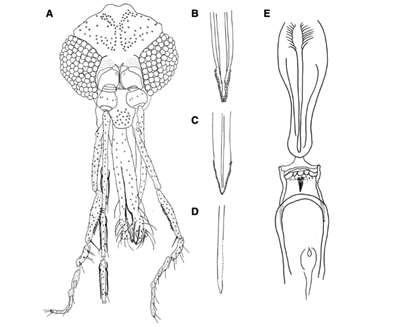New sand fly species discovered in Brazil

In an attempt to better understand the taxonomy of a group of sand flies, researchers in Brazil examined specimens in museum collections. After detailed morphometric and morphological analyses of three different flies in the genus Psathyromyia, they found that the specimens were originally misidentified and that they were actually an undescribed species.
The new species, Psathyromyia baratai, is described in the Journal of Medical Entomology. The species name pays homage to Professor José Maria Soares Barata of the Public Health School of the University of São Paulo for his important contribution to medical entomology, mainly through his teaching and research into the Triatominae.
The state of São Paulo has presented the greatest number of records of this species. Its first recorded capture in the São Paulo municipality, in the Santo Amaro neighborhood, occurred in 1939, when it was misidentified as Psathyromyia limai.
The researchers provide a full description of the new species and an identification key in their article, "Description of Psathyromyia (Psathyromyia) baratai sp. n. (Diptera: Psychodidae: Phlebotominae) From Cantareira State Park, São Paulo, Brazil."
More information: P. B. Sábio et al. Description of ( ) sp. n. (Diptera: Psychodidae: Phlebotominae) From Cantareira State Park, São Paulo, Brazil , Journal of Medical Entomology (2015). DOI: 10.1093/jme/tjv173
Journal information: Journal of Medical Entomology
Provided by Entomological Society of America

















